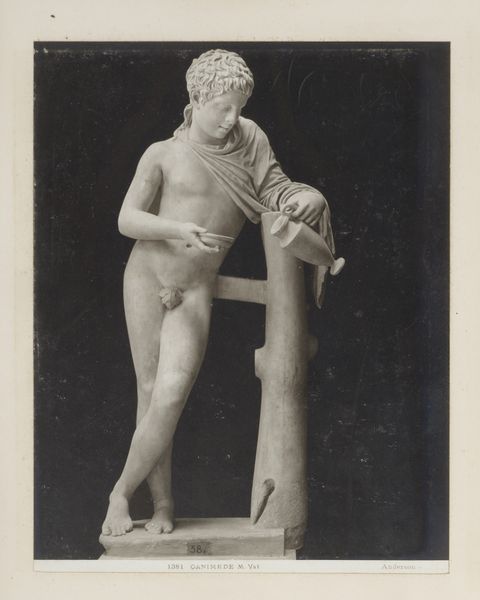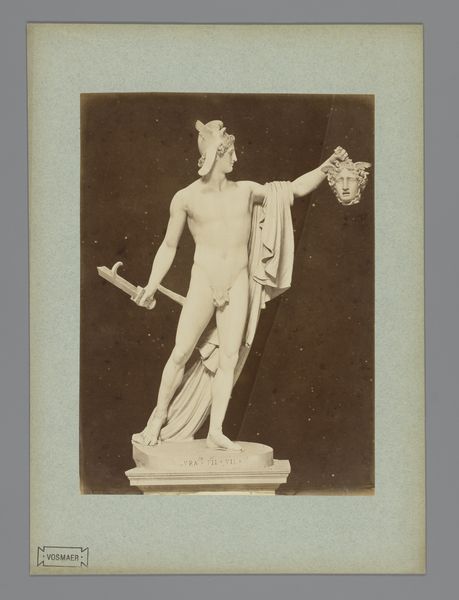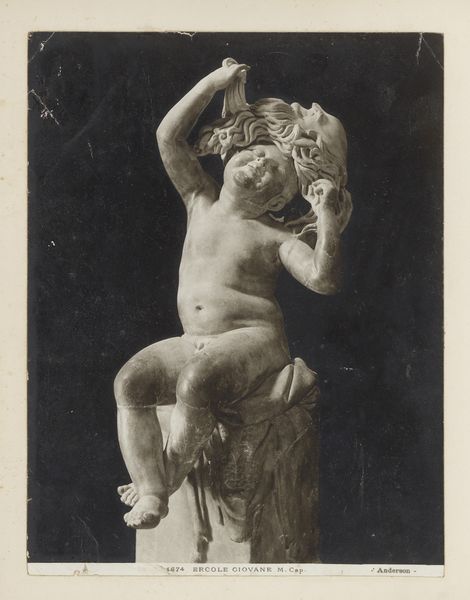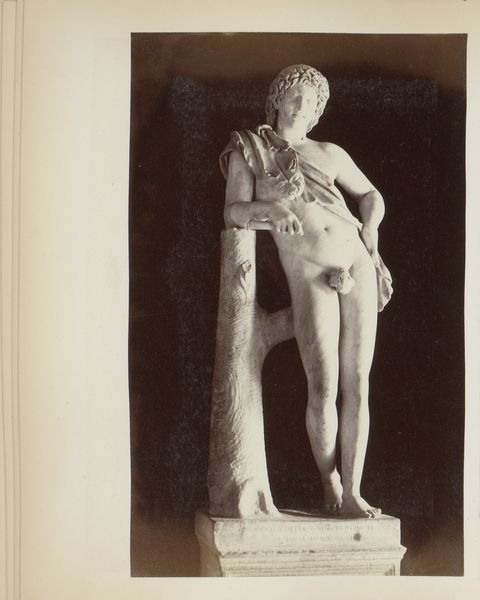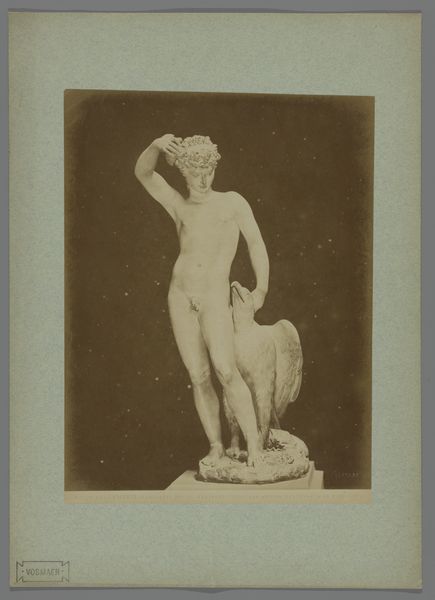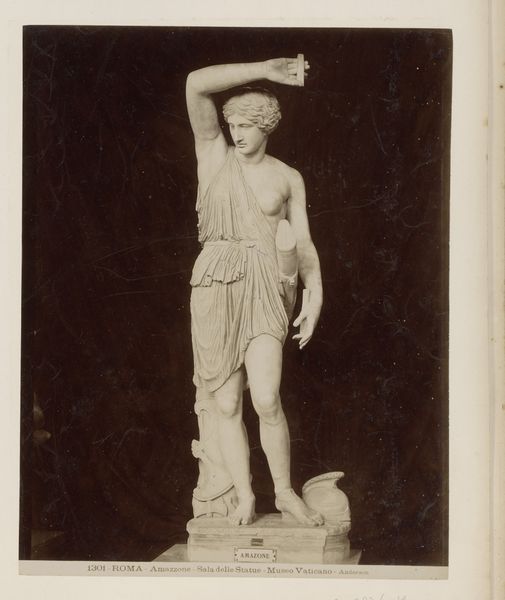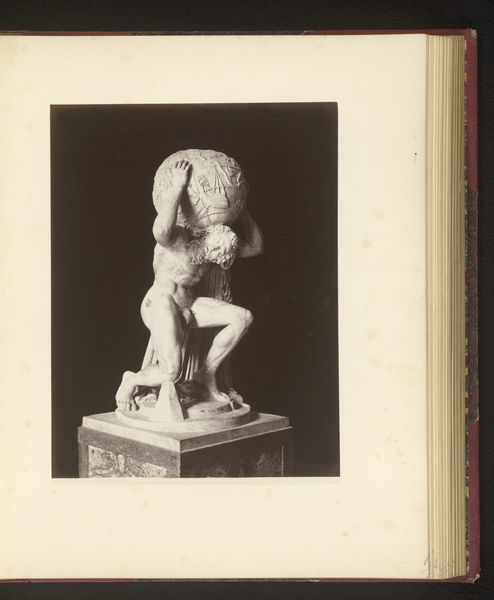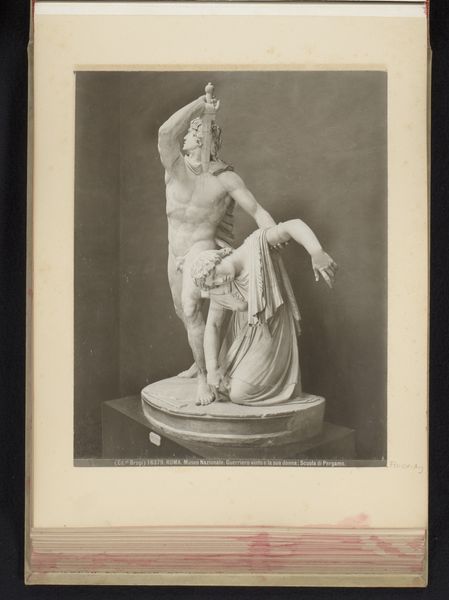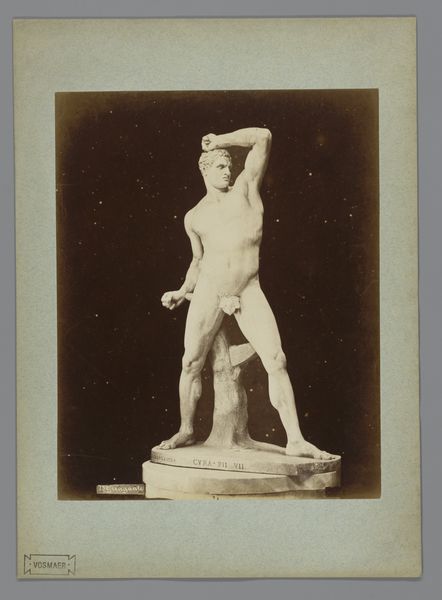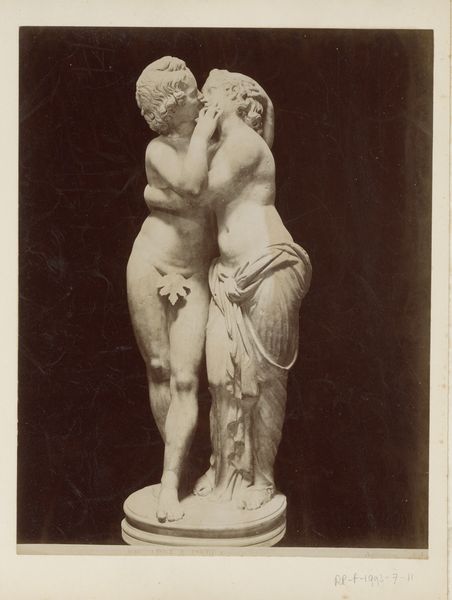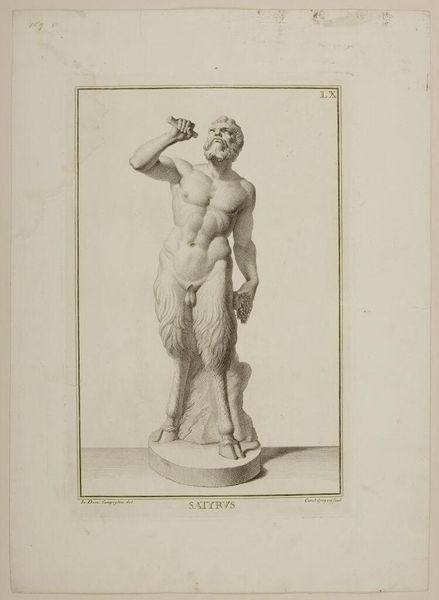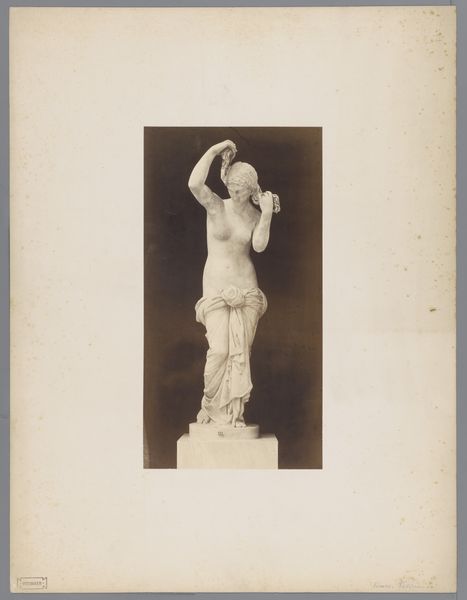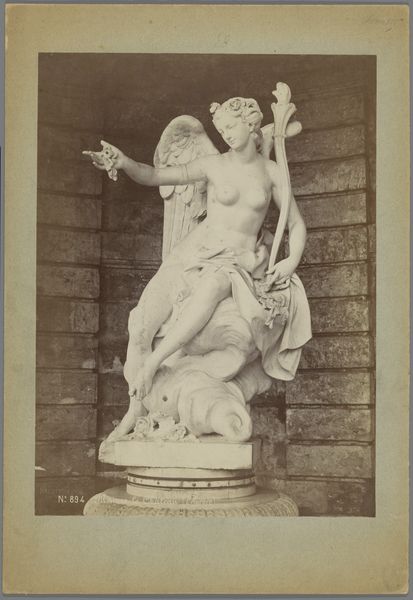
photography, sculpture
#
portrait
#
classical-realism
#
photography
#
ancient-mediterranean
#
sculpture
#
realism
Dimensions: height 252 mm, width 185 mm
Copyright: Rijks Museum: Open Domain
Curator: What strikes you about this photograph, Editor? It's titled "Sculptuur van jongen met gans, Vaticaan," captured by Fratelli Alinari sometime between 1860 and 1900. It now resides here at the Rijksmuseum. Editor: There's an undeniable tension captured, isn’t there? The child is desperately grappling with this struggling goose; it reads as a raw, perhaps even slightly unsettling portrait of control and the struggle against it. Curator: Well, this image documents a marble sculpture that is itself a copy of a Roman bronze originally created in the Hellenistic era. It reveals so much about how classical ideals were reproduced and circulated through various materials like bronze, marble, and, here, photography. This act of repeated reproduction changes its material properties across different mediums and, therefore, its cultural meaning and use. Editor: Precisely! And who is afforded the power and privilege to create and consume it? Looking at this from an activist's point of view, who decided that images of children wrestling animals was worthy of such meticulous recreation, first in bronze, then marble, and finally immortalized in a photograph by Alinari? What hierarchies were they upholding, normalizing power structures related to childhood and nature? Curator: Absolutely, and let’s consider Fratelli Alinari's studio practices. This photograph isn’t just documentation. It’s a deliberate act of artistry itself, with careful attention paid to the lighting, pose, and composition. How did their studio engage with local marble workshops and the economic systems of reproducing classical art? This brings labor into view. Editor: That context deepens the reading significantly. Think about it – Alinari, a photographic firm that commodifies and distributes images globally and across social strata, arguably normalizes Western cultural values centered around classicism and ideal childhood! This romantic ideal becomes a saleable item through material processes tied to studio labor. Curator: It truly illustrates how the means of production—photography, sculpture, studio labor—affect the dissemination of historical narratives and shape public perception. Thank you. Editor: An interesting conversation, yes, showing how interwoven gender, class, and commerce become in a single historical image.
Comments
No comments
Be the first to comment and join the conversation on the ultimate creative platform.

